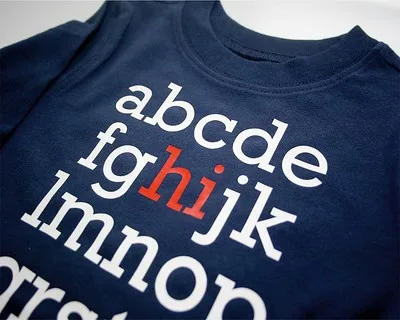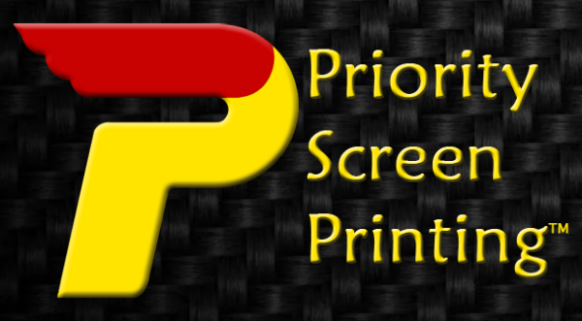How to Remove Screen Printing Ink in 5 Easy Steps
Table of Contents
Are you considering a wardrobe revamp or parting ways with certain garments? Perhaps you’re keen on giving your favorite fabrics a fresh start and want to remove screen printing. Whether it’s a wardrobe rejuvenation or a design correction, knowing certain removal methods is crucial for giving your garments a new look. In this guide, we’ll explore proven methods to effortlessly extract screen prints, ensuring your fabrics are unharmed and primed for a stylish comeback.

How to Remove Screen Printing Ink With Chemical Solvents
Chemical solvents are substances designed to dissolve and remove screen printing ink. This method is effective for various types of fabrics but requires careful handling due to the use of chemicals.
When using this method you want to include chemicals such as:
Acetone: Powerful solvent commonly found in nail polish remover. It is helpful for removing screen printing in small parts or targeted areas.
Isopropyl Alcohol: Or rubbing alcohol, is an effective solvent for many inks. It can be useful for targeted removal of screen printing.
Turpentine: It is a natural solvent derived from pine trees. It has applications in removing screen printing in specific areas.
Apply the Solvent:
- Dampen a clean cloth with the chosen solvent (e.g., acetone, isopropyl alcohol, turpentine).
- Gently blot the screen printing, allowing the solvent to penetrate and break down the ink. Take care not to rub too vigorously to prevent potential fabric damage.
Wipe Away Residue:
- Once the ink is dissolved, use a fresh section of the cloth to wipe away the ink and solvent residue. Be thorough to ensure a clean result.
Final Cleanse:
- To eliminate any remaining solvent traces, launder the fabric following the care instructions. This step ensures the fabric is safe for use and free from any residual chemicals.
Safety Precautions and Tips
- Protective Gear: Wear gloves to shield your hands from direct contact with the solvent.
- Ventilation: Work in a well-ventilated area or outdoors to minimize exposure to solvent fumes. Consider wearing a mask, especially with stronger solvents.
- Test on a Small Area: Before applying the solvent widely, conduct a small test on an inconspicuous area to ensure compatibility with the fabric.
- Dispose of Materials Properly: Adhere to local regulations for the proper disposal of materials used in the process.

How to Remove Screen Printing Ink With Heat Transfer
The Heat Transfer Method is all about using heat to soften the ink, making it easier to remove screen printing from fabrics. It’s a versatile technique that you can do at home with tools like a heat gun or an iron.
How Heat Softens Ink
When you apply heat, it kickstarts a process that softens the screen printing ink, making it more flexible and easy to remove. This essential change is what makes the Heat Transfer Method effective.
Tools for heat transfer
Heat Gun:
- Targeted and controlled application of heat.
- Ideal for precision work and smaller areas.
Set the heat gun to a low-medium temperature, hold it 2-4 inches away from the fabric, preheat for 30 seconds, move in circular motions until the ink softens, then gently peel away the softened ink using a fingernail or dull edge.
Iron:
- Provides broader heat distribution.
- Suitable for larger surface areas and garments.
Set the iron to an appropriate temperature for the fabric, place a clean cloth over the screen printing, press with moderate pressure for 15-20 seconds, lift the iron, and use a fingernail or dull edge to peel away the softened ink.
Hairdryer:
- Offers a household alternative for moderate heat application.
- Effective for small-scale screen printing removal.
Set the hairdryer to a moderate heat setting, preheat the screen printing area for about a minute, and peel away the softened ink with a fingernail or dull edge. Ideal for small-scale tasks and serves as a convenient household alternative.
How to Remove Screen Printing Ink With The Abrasive Method
The Abrasive Method involves a mechanical approach to remove screen printing ink through the use of abrasive tools. This method is particularly useful for stubborn or layered prints but requires caution to prevent damage to the fabric.
Tools for Abrasive Method
Sandpaper: A versatile abrasive tool available in various grits for different levels of abrasion.
Pumice Stone: A natural abrasive suitable for certain fabrics.
Selection of Grit and Technique
When employing abrasive tools in the Abrasive Method, start by selecting the right grit for the sandpaper based on the fabric type and the desired intensity of removal. Utilize a gentle circular motion to rub the abrasive tool over the screen printing, taking care to avoid excessive pressure and potential fabric damage.
Monitoring Progress
Regularly check the progress during the abrasive removal process. This ensures effective removal without compromising the fabric’s integrity. Monitoring allows for adjustments as needed, ensuring a controlled and careful approach.
Using a Wet Pumice Stone
For a wet pumice stone, gently rub it in a circular motion over the screen printing after wetting it. Before widespread application, conduct a prior test on a small fabric area to gauge its impact. The wet pumice stone offers an alternative with its unique abrasive properties.
Precautions and Recommendations
To guarantee a successful and damage-free process in the Abrasive Method, first, confirm the fabric’s compatibility with abrasion. This precautionary step helps prevent fraying or damage to the fabric during the screen printing removal.
Gradual Approach
Begin the abrasive removal process gradually. Start with a milder abrasive and increase the intensity as needed based on the fabric’s response. This step-by-step approach ensures a careful and controlled removal process.
Conducting a Test
Always conduct a test on an inconspicuous part of the fabric before applying abrasive tools more widely. This precautionary measure allows for assessment and adjustment, ensuring the overall success of the screen printing removal without compromising the fabric’s condition.
How to Remove Screen Printing Ink With The Freezer Method
Screen printing removal can be approached with the innovative Freezer Method, leveraging extreme temperatures to weaken and break down ink. This technique is especially useful for delicate fabrics and confined print areas.
Principle of Extreme Cold
The Freezer Method capitalizes on the concept that extreme cold can render screen printing ink brittle, facilitating its removal. This makes it an ideal option for fabrics sensitive to heat or chemicals.
Procedure:
- Preparation:
- Place the item in the freezer.
- Isolate the item to prevent potential damage.
- Freezing Duration:
- Allow the item to freeze for several hours or overnight.
- This process makes the ink brittle and easier to remove.
- Careful Handling:
- Handle the item with care during the removal process.
- Prevent breakage or tearing by avoiding excessive force.
- Moisture Precautions:
- Ensure minimal exposure to moisture during freezing.
- Protect delicate materials for a successful screen printing removal.
The Freezer Method provides a fabric-friendly alternative, preserving the integrity of smaller items or delicate fabrics throughout the process.
How to Remove Screen Printing Ink With The Paint Remover Method
The Paint Remover Method is a chemical-based approach that helps to remove screen printing by relying on specially formulated paint removers to break down and dissolve ink. This method offers versatility, effective for various surfaces such as wood, metal, and certain fabrics, providing an alternative to abrasive or heat-based techniques.
This method is adaptable and suitable for a range of materials. It proves effective on wood, metal, and certain fabrics, making it particularly beneficial for intricate or textured surfaces where other removal methods may pose challenges.
Suitable Surfaces and Materials
Wood: Ideal for removing screen printing from wooden surfaces.
Metal: Effective for metal surfaces with screen printing.
Certain Fabrics: Exercise caution on fabrics, ensuring compatibility and conducting a small test before widespread application.
Application Process
When using the Paint Remover Method, ensure a safe and effective process by following these steps:
Select a Suitable Paint Remover: Choose an appropriate product for both the material and screen printing ink.
Apply the Remover: Following the product’s instructions, evenly apply the remover over the screen printing.
Wait for Reaction: Allow the remover to break down the ink for the recommended duration.
Remove Residue: Gently use a scraper or soft brush to eliminate dissolved ink and paint remover residue.
Additional Tips
Enhance safety and efficiency with the following considerations:
Ventilation: Ensure proper ventilation during application to avoid inhaling fumes.
Protective Gear: Wear gloves and safety goggles for skin and eye protection.
Follow Manufacturer’s Instructions: Strictly adhere to the instructions provided by the paint remover manufacturer for safe and effective application.
Frequently Asked Questions
Can screen printing be removed from any fabric?
The effectiveness of removal depends on the fabric type. Delicate fabrics, like silk or synthetics, may require more cautious approaches to prevent damage during the removal process.
Can I use the same method for different colors of screen printing ink?
Most removal methods are color-neutral, but it’s recommended to perform a test on a small, inconspicuous area to ensure compatibility with the specific fabric and ink combination.
How do I choose the right removal method for my item?
To pick the right removal method for your item, think about the fabric type, the print’s size, and the material. Before using any method widely, perform a small test in a hidden area.
How do I remove screen printing from fabrics that are vintage or delicate without causing harm?
For delicate or vintage fabrics, opt for gentler removal methods like freezing the fabric and peeling off the screen printing, or handwashing with a mild detergent, this involves soaking and careful rubbing to lift the ink. Always test these methods in a small area first and handle the fabric with care during the removal process.
Is it possible to remove screen printing ink from waterproof or water-resistant fabrics?
Removing screen printing from waterproof or water-resistant fabrics poses a challenge due to their resistance to liquids. To tackle this, consider employing chemical solvents specifically designed for such fabrics, ensuring they won’t compromise the fabric’s water-resistant properties.
Can screen printing be removed from textured or uneven surfaces?
When tackling screen printing removal from textured or uneven surfaces, it demands a delicate touch. The key is to use fine-grit sandpaper or a soft brush, employing gentle, circular motions to lift the ink without compromising the surface texture. Before widespread application, conduct a test in a small, inconspicuous area to ensure compatibility. This careful and precise approach ensures successful screen printing removal while preserving the integrity of textured or uneven surfaces.

